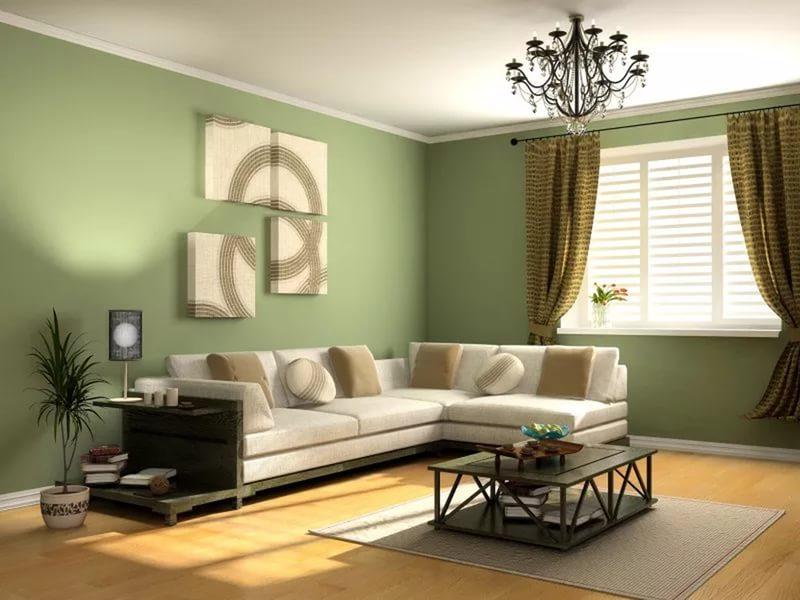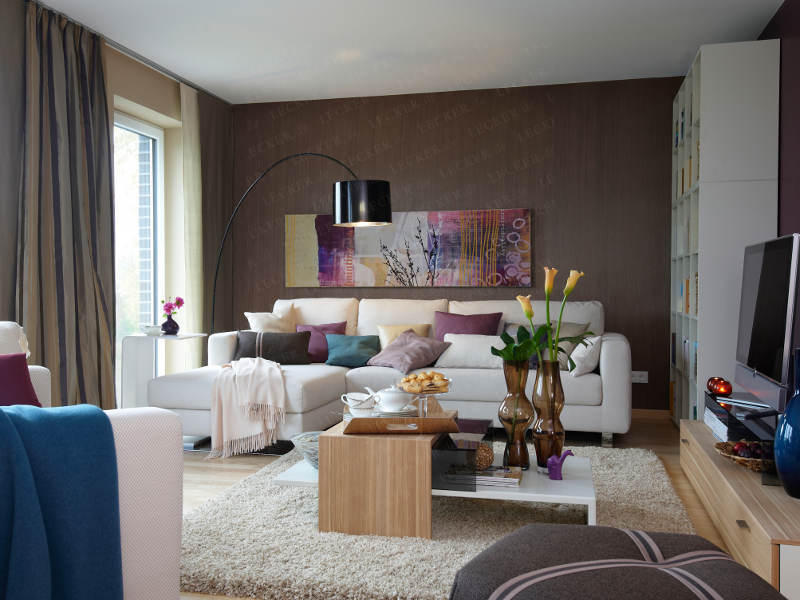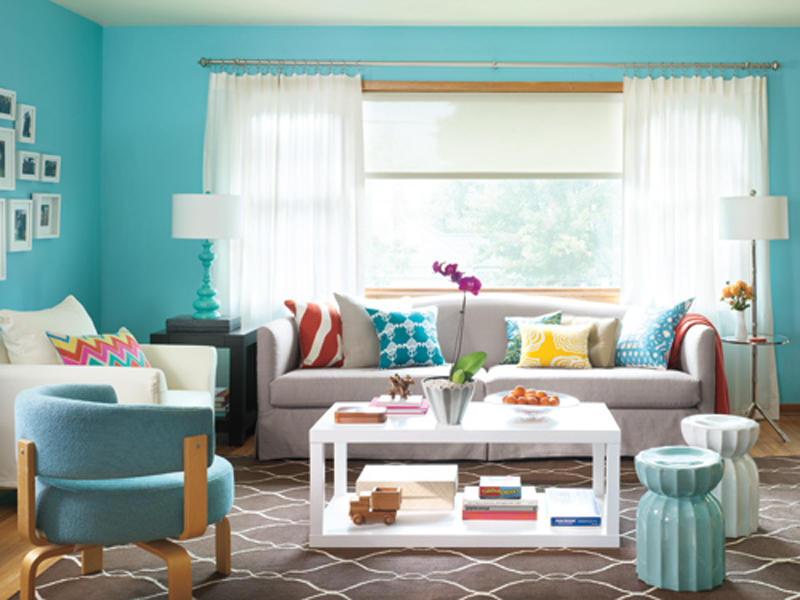Choosing the color of the walls in the living room: photo and 4 criteria
The living room is one of the most important rooms in your home. It is usually the largest. This is where you receive guests, get together with the whole family, drink tea, watch TV, read books, and spend your free time. That is why every member of the household should feel as cozy and comfortable as possible in the living room.
When choosing the color of the living room walls, you should take into account some nuances.
Namely:
- Room dimensions;
- Sides of the horizon;
- Wishes of your household;
- The color of your furniture.
The size of the room plays an important role in choosing a color. Colors come in cold and warm colors. Cold colors include blue, shades of blue, gray, and white. And for warm colors – shades of red, yellow, orange. Sometimes the color can be both cold and warm. For example, shades of green.
Warm colors visually narrow a room, as do bright colors. And cold ones, on the contrary, expand.

That is why the dimensions of the room should be taken into account. If you want to make the ceiling in the room higher, then you should paint it in shades that are lighter than the color of the walls. Darker colors will help visually lower the ceiling.
A dark floor will give the room some lightness and make the ceiling a little higher.
The sides of the horizon play an important role in the design of the room. To choose the right color, they use a certain number of rules: in a room with windows facing the north side, you need to use warm colors, and on the south side - cool colors. If the coloring is chosen correctly, the room will look fresh and beautiful at any time of the day. It is not advisable to make the room too dark - this will narrow the size of the room. In artificial lighting, lamps with various light filters can be used.
Harmonious design: wall tone in the living room
The tone of the walls in the hall should match the color of your furniture.
Namely:
- Gray-blue and blue tones. They go well with almost all shades of furniture and accessories in the room.
- All shades of orange will give the room warm tones. They will fit perfectly with the interior of the room and give it freshness and lightness. In this case, accessories should be chosen in neutral tones.
- Chocolate tones. This solution looks quite original. You just need to select furniture for such walls. No additional elements are required.
- White tones in the interior of the room will require contrast. Black elements and accessories will add a certain elegance to the room.

When developing the interior and color scheme, it is necessary to follow a number of rules: the floors should be darker than the furniture; the walls are a shade lighter than the furniture; No more than five different colors should be used in the room.
Color combination in the living room: what tone to use
Color affects the condition of all residents of the house. Depending on the color of the room, the mood may change. Therefore, it is so important to be able to correctly combine colors with each other and choose the best option for the apartment.

Shades, paints, colors used in the interior:
- Many people prefer to decorate the living room in beige colors, as this is the most acceptable and win-win option. In such an interior, contrasting elements should be avoided. Select accessories and furniture that are similar in tone. The beige color harmonizes perfectly with coffee and chocolate shades.
- Gray color is used very rarely. But it harmonizes perfectly with pink, black, orange and light shades of green.
- Green is a neutral color. Brown, white and yellow go well with it. Green color will add a touch of sophistication to your living room.
- Light purple and lilac colors will go well with beige, brown, and light yellow shades.
- Dark purple colors will visually narrow the room, so it is better to use it in a fairly spacious room. It will go well with red, white, pink and orange.
- You should not use red to completely decorate the room. Combining red decorative details with other colors will be the best solution. Shades of red are combined with brown, white, black, light gray, gold, beige.
Light blue color is quite calm. Pairs well with white, red and beige.
 Country house facade design: a variety of stylistic trends
Country house facade design: a variety of stylistic trends Wooden ceilings - 25 interior examples
Wooden ceilings - 25 interior examples How to make a children's playhouse with your own hands
How to make a children's playhouse with your own hands